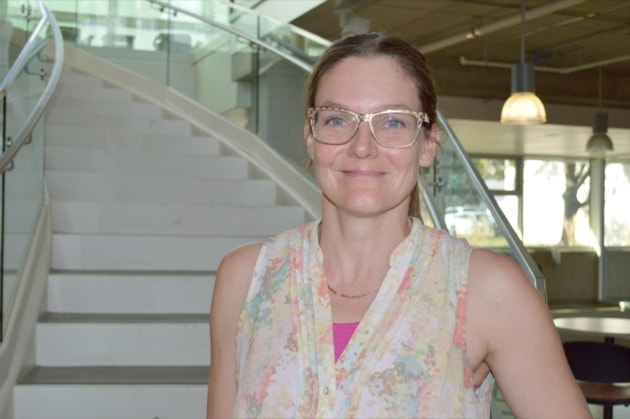Elementary teacher Stephanie Tobin has been doing her job in the Central Okanagan for 11 years, but never has she gone into a school session with such change in the works.
When teachers from kindergarten to Grade 9 open their classrooms next week, they will usher in a new era in B.C. education, moving to a fresh way of teaching as laid out in the provincial government’s redesigned curriculum.
“It’s a lot to digest because every subject has changed for every grade level and the way we are teaching has changed. That’s the hardest part,” said Tobin during a break from a three-day professional development session taking place this week in the Central Okanagan School District as teachers gathered to learn more about the new curriculum as well as other areas of teaching. “The teacher’s role has become a guide on the side instead of a director at the front of the class. There is a lot of self-directed learning, teaching creative and critical thinking, personal and social skills and communication.”
Much of the talk of the redesigned curriculum is about core competencies of critical and innovative thinking as well as social aspects such as inclusion. According to the province, the redesigned curriculum supports student-driven, inquiry-based approaches to teaching and learning by placing an increased focus on real-world issues and problems.
Tobin says it’s a big change for teachers and parents.
“It’s a bit scary for parents because it’s not how they learned,” she said. “It’s scary for teachers too because it’s not how we learned. But it’s the way of the future. It’s a paradigm shift because we are not seen as the holders of the knowledge. Kids can find things out for themselves but we need to teach them how to validate information they may get from the Internet, how to maintain a balance in an ever changing world, how to listen and work with others. Kids need to learn how to problem solve, they don’t need to memorize steps in solving a math problem.”
The new curriculum was introduced last year and teachers were able to start moving towards it in a test year. This year students in kindergarten to Grade 9 will be fully involved in the new curriculum while Grades 10 through 12 go into a test year and get set to introduce it for the 2017-18 school season.
“I think it desperately needed to happen and our teachers took it head on,” said Susan Bauhart, president of the Central Okanagan Teachers Association, which represents some 1,200 public school teachers as well as about 300 more teachers on call. “The kids are becoming a bigger part of their own learning. Before a teacher would stand up and say this is the way we are going to do it. But the students will play a bigger role. One of the things will see students do a self assessment as to how the core competencies relate to them.”
Another new concept will see students able to bring up new ideas in what is called genius hour, where they can tackle questions that they have about the world and teachers will help them research the question, hoping to find answers.
Teacher Izabela Debek says the new curriculum bridges the gap between what kids learn on paper and what they see in the real world.
“I think this is the way kids should learn,” she said. “It gives them a hands-on opportunity to learn. It connects the theory to real life and that’s been the missing link. We’re flipping things around from the way we used to do it. Kids are curious and naturally ask questions. They want to know why things work and being able to develop curriculum to answer those questions is great. I think this will cater to more kids than before.”
